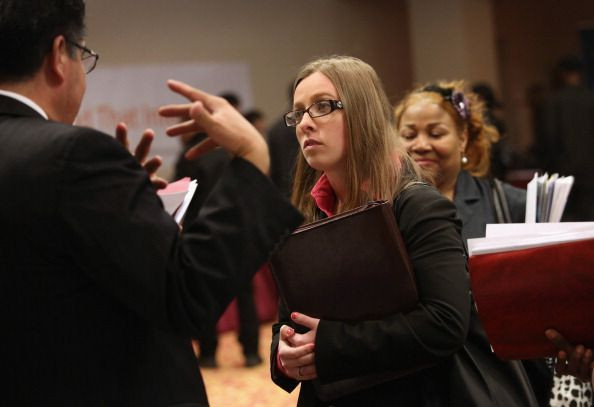US October Jobs Report 2013: Nonfarm Payrolls Added 204,000, Unemployment Rate Ticked Up To 7.3%

The delayed October employment report, which was originally scheduled for Nov. 1, is surprisingly upbeat, raising the prospect that the Federal Reserve could start pulling back its bond purchases sooner, especially after a strong growth of 2.8 percent reported for the third quarter.
Employers added 204,000 jobs in October, the Labor Department reported Friday, widely beating estimates of an increase of 120,000 and the 148,000 jobs created in September. Average job growth over the past three months exceeded a 200,000 pace, matching the strong gains recorded earlier this year. Private sector added 212,000 jobs last month, the strongest read since February.
Moreover, the revisions to prior months clearly show that the labor market was healthier than previously thought. Hiring for September and August were revised up by a combined 60,000. The establishment and household surveys have different ways of classifying workers.
In the establishment report, employees are counted as on payroll if they receive pay during the survey week, which, as usual, was the week containing the 12th of the month (Oct. 6-12). While the nonessential federal employees were not at work during that week, they received back pay to cover the shutdown, so they will show up in the payroll survey.
In fact, the federal government shutdown had little, if any, impact on payrolls. Manufacturing increased by a healthy 19,000 and construction increased by 11,000. Federal employment fell by a modest 12,000 because those workers affected by the shutdown received their back pay when they returned, which means they were counted as employed in the establishment survey.
“There were no discernible impacts of the partial federal government shutdown on the estimates of employment, hours and earnings from the establishment survey,” the Labor Department said.
The largest job gain in October took place at retailers, bars and restaurants, which tend to boost hiring temporarily for the holiday season. The leisure and hospitality sector added 53,000 jobs last month.
“This report shows that the economy is continuing to move forward. The caveat to it is that we are still not seeing an increase in higher-paying jobs that will generate better spending going forward,” said ITG Investment Research Chief Economist Steve Blitz. “But work is work and it’s better than nothing.”
The unemployment rate is a different story, however. The shutdown pushed the jobless rate higher to 7.3 percent from 7.2 percent in September. That’s the first increase in three months. The unemployment rate is derived from a separate Labor Department survey of households rather than the payrolls tally.
While the household survey will count furloughed federal workers as employed, the household survey will record them as unemployed, according to the Labor Department’s fact sheet. The same happened during the late 1995 and early 1996 shutdown. On that occasion, payroll employment continued to rise while household employment fell.
At the start of the recent shutdown, roughly 800,000 federal government employees were told to stay at home. But by the time of the reference week for the household survey, 350,000 civilian defense employees had been recalled to work. That suggests a maximum of 450,000 government workers will have been classed as unemployed.
“That explains the 720,000 drop in the labor force and the 735,000 decline in the household survey measure of employment,” Capital Economics’ Paul Ashworth said.
As a result, the labor force participation rate – a measure of the proportion of the population employed or seeking employment – dropped from 63.2 percent to 62.8 percent, the lowest level since March 1978. With those federal employees back at work now, all of this should be reversed in November's report.
The average workweek for private employees stood at 34.4 hours last month. That compares to 34.3 hours a year earlier. Average hourly earnings was up to $24.10, bringing the year's gain to 2.2 percent, or 52 cents a week on average.
Market sentiment around the Fed has swung dramatically in the past six months -- in the spring it was “QE infinity,” by the fall it was “tapering regardless of the data,” and more recently some seem to again see QE infinity.
The Fed surprised Wall Street in September by continuing its $85 billion-per-month bond-buying program, rather than beginning to wind it down as widely expected.
The central bank hit the snooze button again in October, but left the prospect of a December “taper” on the table, saying any decision will depend on the economic data.
“Once again, the U.S. economy appears to be overcoming a summer swoon. In our opinion, the data would justify the Fed reducing the pace of its asset purchases in December,” Ashworth said.
© Copyright IBTimes 2024. All rights reserved.





















